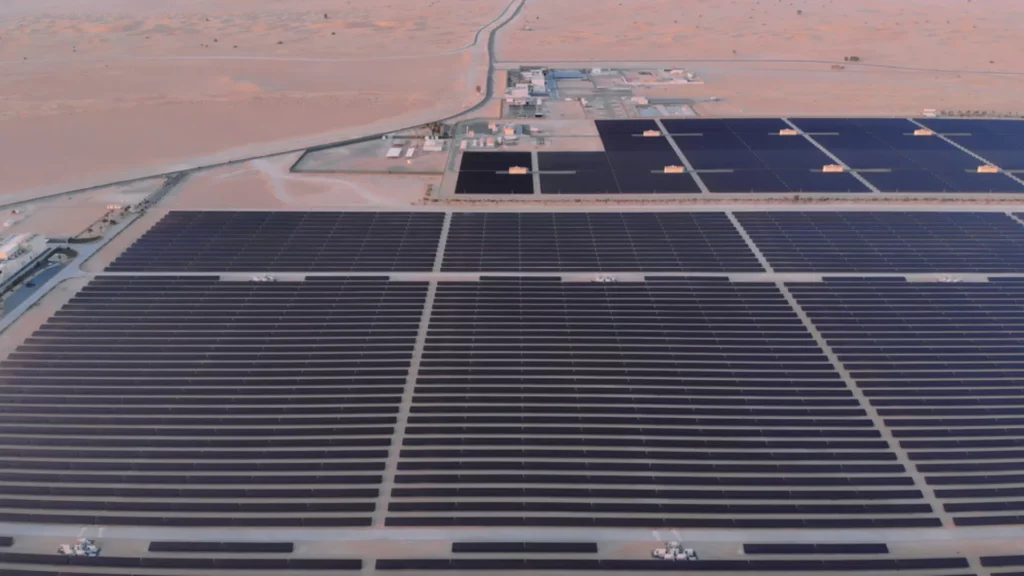To reach net-zero emissions by 2050, the UAE, the third-largest producer in Opec, has been making significant investments in clean energy projects, ranging from nuclear to solar.
The generation of clean energy in UAE was 27.83 percent of the country’s total energy mix last year, which signifies a major milestone in the push towards climate change, according to the energy and infrastructure minister.
Suhail Al Mazrouei spoke as the UAE government put efforts to meet the 2030 target of 30% renewable energy. The four-reactor Barakah nuclear power facility began operating last week, and a significant investment in solar energy has now started to pay dividends. Before this, gas-fired facilities provided more than 95% of the electricity in the United Arab Emirates.
Ahead of Monday’s World Utilities Congress in Abu Dhabi, the minister told the official news agency Wam that the UAE had doubled its renewable energy capacity between 2019 and 2022 as part of the UAE Energy Strategy 2050 to triple the installed capacity by 2030.
He continued by saying that the installed renewable energy capacity in the UAE reached 6.1 gigawatts last year, a 70% increase.
To reach net-zero emissions by 2050, the UAE, the third-largest producer in Opec, has been making significant investments in clean energy projects, ranging from nuclear to solar.
In July last year, the UAE Cabinet authorized the second-biggest economy in the Arab world to announce the updated version of UAE Energy Strategy 2050 and the creation of the National Hydrogen Strategy.
As per the revised goals of the UAE Energy Strategy 2050, the nation intends to allocate around Dh150 billion to Dh200 billion by 2030 to guarantee the fulfillment of energy needs and uphold economic expansion inside the UAE.
The projects included in the second phase of Dubai’s waste-to-energy project include 1.8 gigawatts phase VI of the Mohammed bin Rashid Al Maktoum Solar Park and two significant photovoltaic projects in Abu Dhabi which are the 1.5 gigawatt Al Ajban and the 1.5 gigawatts Al Khazna.
He claims the recently commissioned fourth reactor at the Barakah facility and a hydroelectric power plant in Hatta are the two significant contributions that will be made.
He underlined how crucial Adnoc’s carbon management initiatives are to the UAE’s climate change policy.
Adnoc aims to lead the way in implementing carbon capture and storage technology to become climate-neutral by 2024. As a part of this strategy, it targets to increase its yearly carbon capture capacity to 10 million tonnes by 2030.
The Cabinet decided to establish a policy to regulate the energy service market of the United Arab Emirates and improve the collaboration between the government, private sector, and energy service providers.
According to them, the policy’s objectives are to expand the market for energy services in the United Arab Emirates through public-private partnerships, encourage investment in renewable energy and energy efficiency projects, support the National Energy and Water Demand Side Management Programme 2050, and promote sustainable economic growth.
Speaking at a panel discussion at the World Economic Forum’s special meeting in Riyadh in April, Mr. Al Mazrouei stated that renewable energy is the most affordable source of energy and lowers the levelized cost of electricity, which is the average cost of generating power throughout the course of a power plant’s lifetime.
He stated that at the time, the UAE might exceed its goal of tripling its renewable energy capacity by 2030 due to cheap costs for clean energy and the installation of greater solar power to generate green hydrogen.
The United Arab Emirates (UAE) announced 2021 its Net Zero 2050 Strategic Initiative, a Dh600 billion investment plan spread over the next thirty years in clean and renewable energy sources. It was the first to commit to achieving net-zero emissions by 2050 among the Gulf States.
